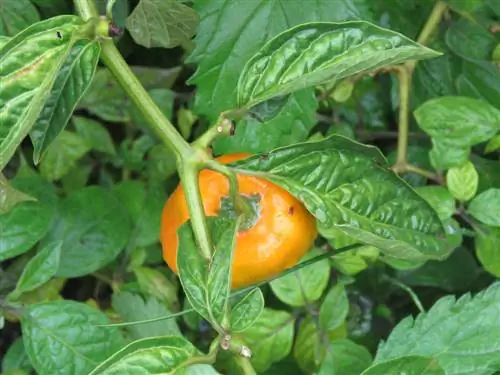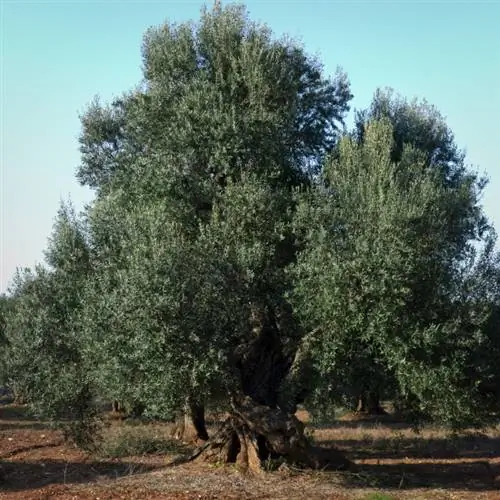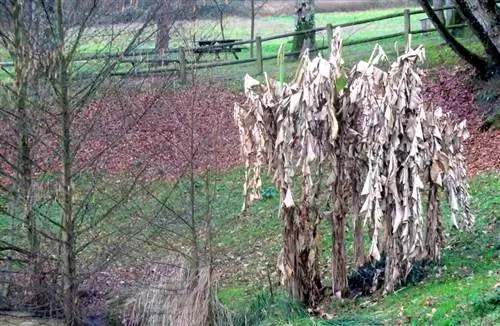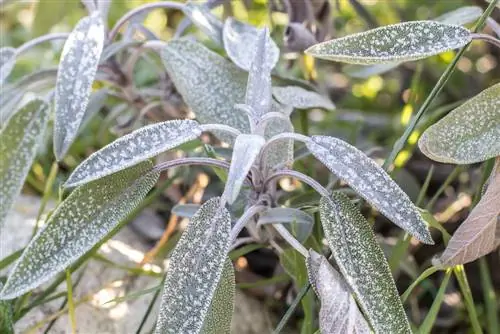- Author admin [email protected].
- Public 2023-12-16 16:46.
- Last modified 2025-01-23 11:22.
The chili tree or chili tree (bot. Capsicum pubescens) originally comes from Central America. The plant can grow very old, but is not hardy. With a size of up to four meters, wintering is not always easy, but it is possible.

How do I properly overwinter a tree chili?
To overwinter a tree chili successfully, it should be placed in a bright, moderately warm room. In winter, water regularly but less, do not fertilize and possibly remove leaves. Cut back and repot in February.
The right winter quarters
In general, a tree chili tolerates the Central European climate better than other chili varieties. Nevertheless, it is too cold outside for the plant in winter. It should overwinter brightly, but not too warmly. Dark basement rooms are just as unsuitable as overheated living rooms. With ideal wintering, the crop yield increases, so some energy and care should be put into this.
The right care in winter
Even in winter, your chili tree needs a little care. The plant should be watered regularly, but less than during the summer months. The soil/substrate must not dry out. However, you do not give the chili tree fertilizer in winter.
Before you bring your tree chili into its winter quarters, check the plant for any pest infestation and remove any unnecessary leaves (for example on the shoots that should be cut back in spring). This will reduce evaporation and water requirements. Cut back the tree chili around February if the tree gets too big for you.
The most important things in brief:
- not hardy
- ideal winter quarters: moderately warm and bright
- Check plants for pests in autumn
- possibly remove some of the leaves
- water regularly in winter but less than in summer
- Do not fertilize until flowering begins
- cut back and repot the plant in February
- When repotting, loosen the roots and possibly cut them back
Tip
Overwinter your chili trees in a light place and not too warm, but not too cold either, then you can hope for a good harvest next year.






